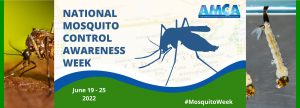September is National Food Safety Education Month, highlighting the importance of safe food handling techniques to protect public health (United States Department of Agriculture [USDA], n.d.). Approximately 48 million people in the United States become sick from consuming contaminated or improperly cooked food each year and about 3,000 of these cases are fatal. Yet, these numbers may underestimate the actual number of cases since many food-borne illnesses are not reported. Those at higher risk for these types of illnesses include children under the age of five, seniors over 65, pregnant women, and the immunocompromised (Centers for Disease Control and Prevention [CDC], 2020). Part of the job description for environmental and public health professionals includes ensuring the public has the information and skills to keep themselves healthy.

According to the Partnership for Food Safety Education, there are 4 core practices to keep in mind when handling food:
Clean
Good hygiene is among the most important steps to prevent bacteria and other agents from contaminating our food and getting us sick. Hand washing with warm water and soap for a minimum of 20 seconds before and after handling food is an efficient way to prevent contaminants from contacting food. It is also essential that kitchen supplies including cutting boards, utensils, and all surfaces are cleaned/sanitized before and after use. Lastly, rinsing and scrubbing fresh produce can remove any harmful bacteria that reside on the skins (Partnership for Food Safety Education, n.d.)
Separate
The prevention of cross-contamination is one way to stop bacteria from being transferred to multiple areas throughout your kitchen. Raw poultry, meat, seafood, and other items should be kept away from fresh or dry ingredients while being stored in the refrigerator and during meal preparation. Using separate cutting boards and utensils for raw ingredients and produce is another way to keep any harmful agents away from food that will not be cooked (Partnership for Food Safety Education, n.d.)
Cook
Cooking meats, poultry, and other raw meats and fish to the proper internal temperature is a vital food safety practice. Steaks, roasts, and fish should reach a minimum internal temperature of 145°F. Ground meats should reach 160°F due to potential contamination during the grinding process. Lastly, eggs should not be left runny or eaten raw. Both the egg whites and yolks should be cooked until firm. Reheating to proper temperatures is just as important because bacteria can thrive in any cold spots existing in reheated foods. Some ways to prevent this are to reheat thoroughly to 165°F, rotating dishes, and stirring liquids throughout the reheating process. Thermometers are the only effective way to ensure dishes and leftovers have reached the appropriate internal temperature; appearance is not proper indication (Partnership for Food Safety Education, n.d.).
Chill
Lastly, and often the most forgotten step to food safety, is chilling and thawing and at the correct temperature. When foods are left in the “danger zone” they are susceptible to bacterial growth. It is important to refrigerate (£ 40°F)/freeze (£ 0°F) cold foods purchased from the grocery store within one to two hours. When thawing food, it is important to thaw evenly at never at room temperature. Thawing in the refrigerator, in a cold water bath, or in the microwave before cooking are the safest ways to ensure your food has no frozen spots. When storing food, it is important to make sure hot foods have cooled before refrigerating. Large amounts of leftovers should be separated into shallow containers for quicker cooling (Partnership for Food Safety Education, n.d.).
Food-borne illness is a potentially life-threatening, preventable condition that impacts millions of Americans every year. Education, safe food-handling and good personal hygiene are essential to protect public health (CDC, 2020). Ways for environmental and public health professionals to reach the public during this time include promotion of information via digital presence (social media), eye-catching graphics, easy to understand fact-sheets, and encouraging the public to stay up-to-date with CDC recalls and outbreaks (USDA, n.d.). National Food Safety Education Month gives us the chance to spread information that can prevent food-borne illnesses.
References:
Centers for Disease Control and Prevention. (2020). Food Safety Education Month. Retrieved from https://www.cdc.gov/foodsafety/education-month.html?deliveryName=USCDC_485-DM36039
Partnership for Food Safety Education. (n.d.). The Core Four Practices. Retrieved from https://www.fightbac.org/food-safety-basics/the-core-four-practices/
U.S. Department of Agriculture. (n.d.). 2020 National Food Safety Education Month. Retrieved from https://wicworks.fns.usda.gov/resources/2020-national-food-safety-education-month
Photo source: CDC Keep Food Safe
*This article is contributed by MS Environmental Health student, Jordan Mazzara.



